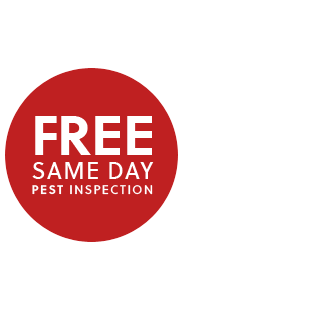What you need to know about drywood termites
Didn’t we just get through termite season? It’s a question many California homeowners ask this time of year. The answer is, technically, yes, as the swarming season for subterranean termites typically takes place in the spring. However, swarming season for subterranean termites’ lesser known but no less destructive relative – drywood termites – kicks into gear once summer heats up, and you would be wise not to underestimate their potential for damage.
Clark, your neighborly pest control, termite, and lawn care expert, visited with Andy O’Hara, the termite service manager for Clark Pest Control in Belmont, California. O’Hara says that while drywood termites don’t receive the notoriety that subterranean termites do, they still can cause significant structural damage to a home.
“During a recent inspection, I was probing a piece of wood siding, and it was essentially a 10-foot painted hollow board,” he says. “Drywood termites had infested the board so heavily that there was no structural integrity left.”
Where are drywood termites found in California?
Drywood termites are found across the state from the north to the south, but mostly along the Pacific coast and some places in the Central Valley.
How are drywood termites different from subterranean termites?
Drywood termites do not need as much moisture to survive as subterranean termites do, and they nest in wood rather than in the soil around a structure. They are cryptic insects that are difficult to detect with the naked eye. They live deep inside wood, and except during periods when they swarm or when repair work is being done on infested homes, they are seldom seen. Colonies are smaller than those of subterranean termites – usually fewer than 1,000 individuals – and are usually widely dispersed and can take years to mature.
Where will I see drywood termites swarming?
The most common sighting of drywood termites are flying adult reproductives – also called swarmers – that occur during daytime hours. One of the surest signs that drywood termites are present is fallen wings on a windowsill or hardwood floor.
O’Hara says that drywood termite wings are not strongly attached to their bodies, and as a result, drywood swarmers are at the mercy of the wind when it comes to the direction they fly. When the wings fall off, the termites’ mobility is limited, and they will likely be found in the wood near that spot. He says that customers may even see swarming drywood termites indoors around a skylight looking for a way out of the house.
It’s easy to overlook the wings as dirt or something else and not realize that drywood termites are present, or mistake them for another insect – carpenter ants, to the untrained eye, may be similar in appearance. Therefore, a regular home inspection and positive identification made by a pest professional is important.
What areas of a house do they infest?
Drywood termites will nest in areas you typically don’t visit very often, including attics, crawlspaces, and the roof. Some of the more susceptible areas include:
• Wood siding and wooden roof shingles
• Wood framing and supports in attics
• Wood areas near gutters and downspouts
• Wood molding, framing, and joints around windows and doors
• Under eaves and overhangs
• Subfloors and floor joists
• Flashing around skylights and chimneys
• Hardwood flooring
What are the signs of a drywood termite infestation?
Drywood termites eat across the wood’s natural grain and make chambers connected by tunnels whose walls are smooth as if finely sanded. The result is a sandy residue that you may see on floors or windowsills. Other signs you may have drywood termites include:
• Soft, hollow-sounding wood
• Bubbling paint on wood siding and trim
• Discarded swarmer wings
• Active swarms inside or outside a structure
What are the treatment options for drywood termites?
Following a complete inspection of your home, Clark will recommend the appropriate treatment method. Options include whole house fumigations or local spot treatments.
For maximum protection against termites, ask about Clark Pest Control’s exclusive Termite Infestation Protection (T.I.P.) program, which is designed to cover your home from future infestations and damages from all species of termites. A complete termite inspection must be completed to determine if your home qualifies. Then, for a small monthly fee, you can avoid costly out-of-pocket treatment and repair expenses, which can save you money and headaches caused by termite infestation and give you peace of mind.
To keep your home protected from drywood termites, call or text (800) WE-NEED-YOU (936-3339) or send an email to clarkcares@clarkpest.com for more information.
Until next time, the pest management professionals at Clark Pest Control thank you for helping to keep unwanted pests out of your home and yard.


